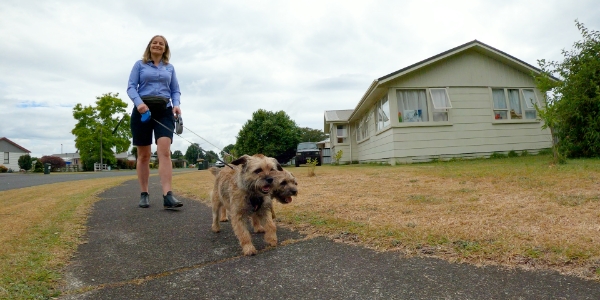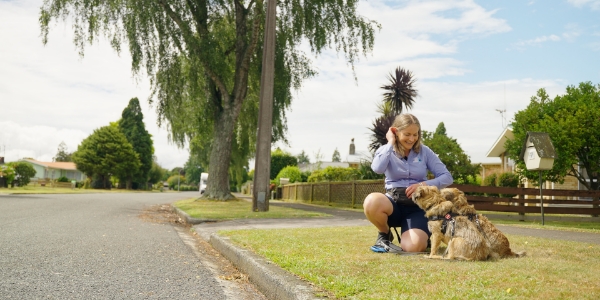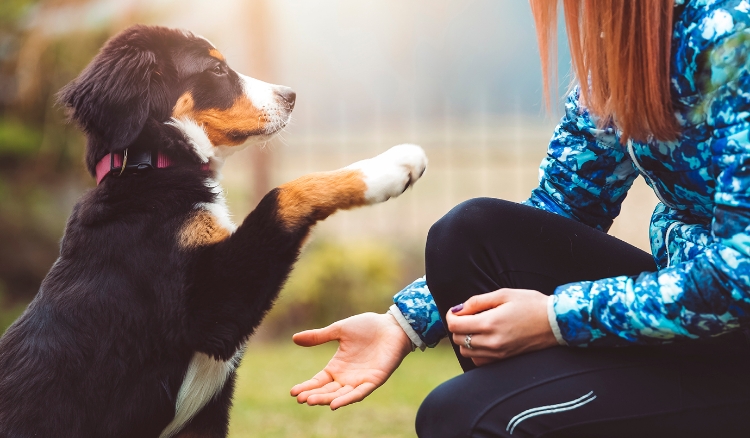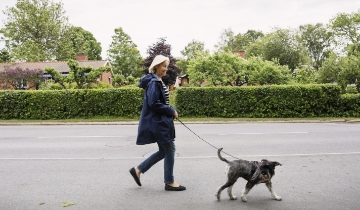Road safety tips for dog owners
Training essentials to protect your dog around busy roads
Sit. Look. Listen. All words we know, but does your dog? Helping your dog be safe around roads is really important. They rely on you to keep them safe. Selina McIntyre, from Dog’s Best Friend, helped us out with some of the top tips for any dog owner to work on to keep their pooch road-safe.
Make sure you’re in control
Dogs can get excitable – especially when the ‘walk’ word is used. But for the safety of you and your dog, you need to be in control. Practice training essentials at home first. When you’re out walking, praise and occasionally reward your dog with a super tasty treat if they return to you or interact with you without being prompted.

Preventing pulling on the lead
Dogs can get excited around busy roads and at the start of a walk, and they may pull on the lead. It is okay for your dog to walk in front of you, but they shouldn’t be calling the shots and pulling you along. The lead should be fairly loose. When your dog pulls on their lead, stop immediately. When they come back to you, praise them.
Training your dog to sit
The easiest place to teach your dog to sit is in the very corner of a room. Hold a tasty treat just above their nose and move it above their head. Because your dog can’t move backwards, their bottom will move to the floor as they try to follow the movement of the treat.
Training your dog to stay
To teach your dog to stay, face your palm out to your dog and hold it there, saying the word ‘stay’. Maintain eye contact. Reward with a treat and praise. Once your dog can do this, try more advanced training like walking away or adding distractions. If your dog moves, take them back to the original spot and repeat.
Training your dog to ‘come’ (recall)
When calling your dog back, bend down, as you’re less threatening in this stance. If your dog doesn’t respond, walk a safe distance away. Listen carefully, but don't look. The pull of the pack should be too strong and you should soon hear panting coming up behind you!
You can practice this in your garden, or in a park using a long lead. Lengthen the distance of the recall and then progress to off-lead recall when your dog is responding really well.

What to do if your dog is a gate bolter
If your dog loves to bolt for the door when visitors arrive, ask your dog to sit and stay. Don’t open the door until they do. Start this training using an internal door first.
Avoid chasing your dog if they do escape – you’ll create a game of tag and they’ll avoid you!
If your dog gets onto the road, you’ll need good recall. Bend down and encourage them with higher-pitched enthusiasm. You may need to command them to sit first, to prevent them from running into traffic.
Reward, rather than scold, your dog when they return to reinforce the good behaviour of coming back to you or returning inside.
Top tips around busy roads
- When you’re near busy roads, keep your dog on a short lead. The lead should be short enough so that you feel in control.
- Be visible – try to cross the road where you can see traffic and the traffic can see you. At night, use high-vis or reflective clothing and collars.
- Perfect commands at home first, then practice outside in different environments. Lots of practice (and patience) makes perfect.
- Remember, you’re your dog’s leader and you need to take charge here.
Want more tips from Selina? You can buy her book Big Dog, Small Dog: Make Your Dog Happier By Being Understood which is packed fill of great training tips for a range of behaviour issues.




